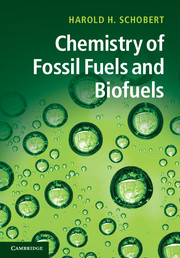Species in which carbon has a valence other than its customary four form as intermediates in reactions, and usually display high reactivity. Five kinds of reactive intermediate are known: carbonium ions [A], in which carbon has a valence of five, as in the methanonium ion, CH5+; carbocations, radicals, and carbanions, in which carbon has a valence of three; and the divalent carbenes. Of these, carbocations and radicals are the most important in fuel chemistry.
Bond formation and dissociation
When the ultimate effect of a chemical reaction is breaking of one or more bonds, the overall reaction will invariably be endothermic. When bond-breaking is one in a series of elementary steps in a reaction mechanism, that individual step is also invariably endothermic, even if the overall reaction is exothermic.
Suppose there are two generic atoms, A and B, that approach each other from an infinite distance apart (on an atomic scale, this “infinite” distance could be, say, a millimeter). At first, they have no interaction. As they approach to a distance at which they can interact, the potential energy of the A–B system becomes lower than that of the two separated A and B atoms. The potential continues to drop, until a bond has formed between them. Attempts to decrease the A–B distance even further cause the potential to shoot up rapidly, because of repulsion between electron clouds on the two atoms.
A plot of potential energy vs. interatomic distance, sometimes called a Morse curve [B], will look like Figure 7.1.
The lowest energy state, the ground state, is not exactly at the bottom of the “potential well.” The point at the very bottom is the zero-point energy, which is the energy the bond would retain at absolute zero to avoid disobeying the Heisenberg Uncertainty Principle [C]. Addition of energy to the bond, usually thermal energy, promotes the system to a higher state of vibrational energy, see Figure 7.2.
